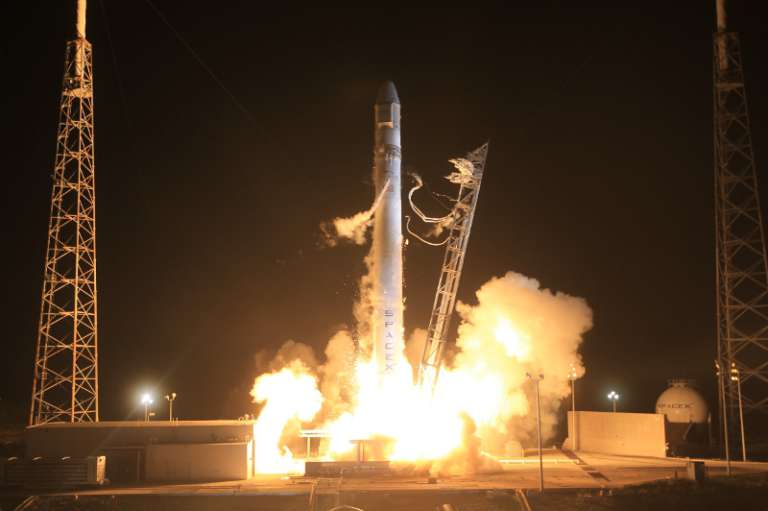Jason Davis • May 22, 2012
SpaceX successfully launches Dragon into orbit
SpaceX moved closer to spaceflight history last night as their Falcon 9 rocket rose from its launch pad, sending the Dragon capsule on a journey to berth with the International Space Station. Liftoff occurred at 3:44AM EDT (7:44 UTC) from Cape Canaveral's Launch Complex 40. The ten-minute flight was a complete success, ending with the Dragon capsule sailing gently into low-Earth orbit.

Here's a video of the launch:
A nominal main engine cutoff occurred three minutes into flight, as two of the first stage's Merlin 1C engines fell silent. Moments later, the remaining seven shut down, and the Falcon's first stage was jettisoned. A few seconds later, the upper stage's single Merlin vacuum engine ignited, glowing orange-red as viewed from a real-time camera on the rocket.
Here's a video of the staging:
Breaking long-held conventions in American spaceflight commentary, SpaceX announcers called out the rocket's velocity and distance in metric units. Scores of Internet users tuned in to watch the event online via simultaneous SpaceX and NASA webcasts, making the hashtag #DragonLaunch the number-one trending topic on Twitter.
Cheers erupted in SpaceX's Hawthorne, CA Mission Control Center when the Dragon was released from the Falcon's upper stage. The commercial spacecraft subsuquently deployed its solar arrays without a hitch, sparking a fresh round of cheers and high-fives among SpaceX employees. This was an important milestone for the company, as the first Dragon flight did not use solar arrays.
Here's a video of the solar array deployment, and the ensuing celebration:
Now safely in orbit, SpaceX's Dragon capsule must begin a challenging set of demonstration maneuvers to prove its readiness to approach and berth with the International Space Station. The first few of those milestones were met Tuesday morning, as the Dragon opened its bay door, exposing the sensors needed to approach the Inernational Space Station, as well as the grappling fixture that astronauts will snag with the station's robotic arm. The Dragon also successfully used its star tracker for navigation, and checked out its LIDAR and thermal imaging systems, both of which are required for berthing.
As the Dragon approaches the ISS, there will be opportunities to see both spacecraft in the sky at dusk and dawn. To see if the duo will be visible from your location, check out the Heavens Above website.
I will continue to post periodic updates on my blog, and via my Twitter account, as the mission progresses.
Support our core enterprises
Your support powers our mission to explore worlds, find life, and defend Earth. You make all the difference when you make a gift. Give today!
Donate

 Explore Worlds
Explore Worlds Find Life
Find Life Defend Earth
Defend Earth

